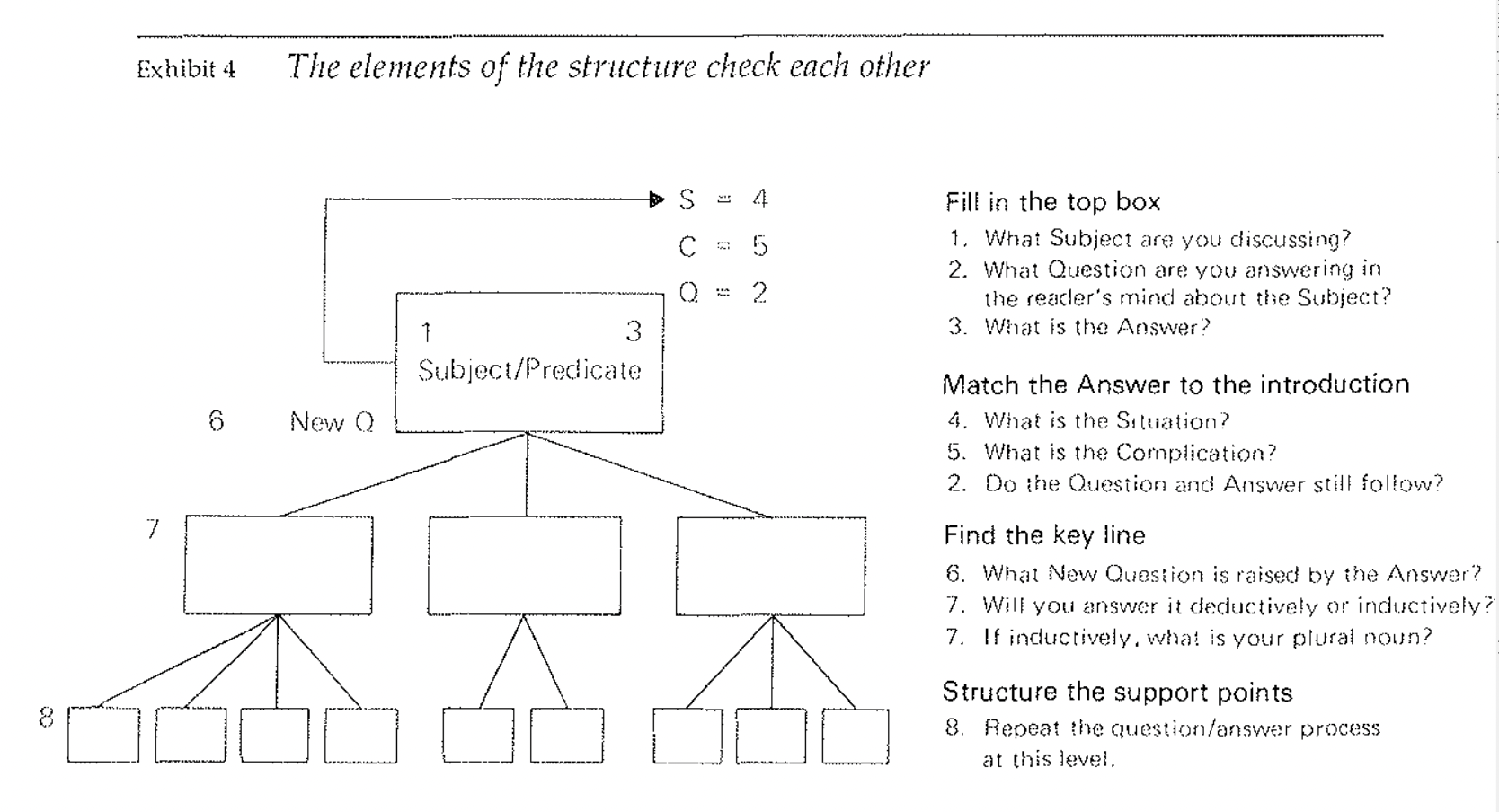Welcome to SCQA aka Clear Thinking
This site implements the Minto Pyramid Principle framework for clear thinking and communication.
The Minto Pyramid Principle is a communication framework developed by Barbara Minto, a former McKinsey consultant. It helps people structure their ideas and communicate them clearly and effectively.
It suggests that ideas should be presented in a logical and hierarchical order, with the main idea or conclusion at the top and then supporting it with smaller, related ideas or arguments arranged in descending order of importance. This structure gives rise to the name pyramid.
The pyramid structure helps to ensure clarity and easy understanding of the message being communicated. The Minto Pyramid Principle has been widely adopted in business communication and consulting.
Step by Step
Draw a box: This represents the box at the top of your pyramid. Write down in it the subject you are discussing, if you know it. If not, move on to step two.
Decide the Question: Visualize your reader. To whom are you writing, and what question do you want to have answered in his mind about the Subject when you have finished writing? State the Question, if you know it, or go on to step four.
Write down the Answer: if you know it, or note that you can answer it.
Identify the Situation: Next you want to prove that you have the clearest statement of the Question and the Answer that you can formulate at this stage. To do that, you take the Subject, move up to the Situation, and make the first noncontroversial statement about it you can make. What is the first thing you can say about it to the reader that you know he will agree is true-either because he knows it, or because it is historically true and easily checked?
Develop the Complication Now you begin your question/answer dialogue with the reader. Imagine that he nods his head in agreenment and says, “Yes, I know that, so what?” This should lead you to think of what happened in that Situation to raise the reader’s Question. Something went wrong, perhaps, some problem arose, or some logical discrepancy became apparent. What happened in the Situation to trigger the Question?
Recheck the Question and Answer: The statement of the Complication should immediately raise the Question you have already written down. If it does not, then change it to the one it does raise. Or perhaps you have the wrong Complication, or the wrong Question, and must think again.
The purpose of the entire exercise is to make sure you know what Question it is you are trying to answer. Once you have the Question, everything else falls into place relatively easily.
Context for the Top Down Approach
As Minto explains it:
It is generally easier to start at the top and work down because you begin by thinking about the things that it is easiest for you to be sure of-your subject and the reader’s knowledge of it, which you will remind him of in the introduction.
You don’t want simply to sit down and begin writing the opening paragraph of the introduction, however. Instead, you want to use the structure of the introductory flow to pull the right points out of your head, one at a time. To do so, I suggest you follow the procedure shown in Exhibit 4 and described below.
